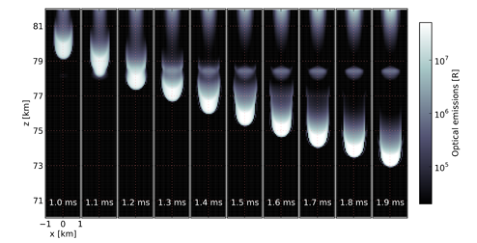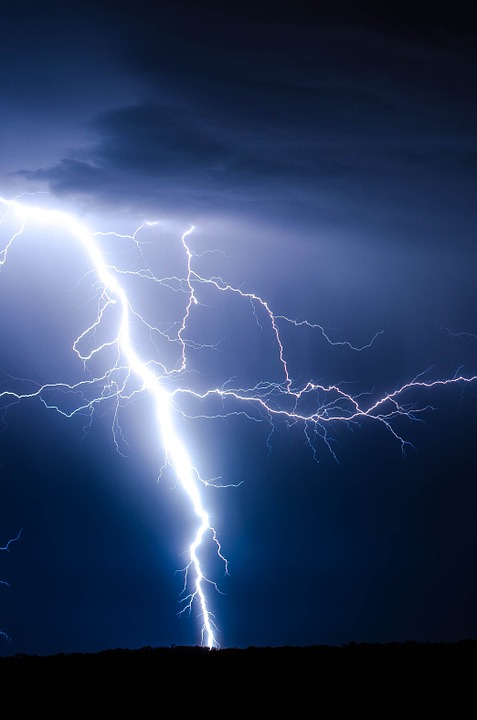Predoctoral contract in the atmospheric electricity group of the IAA-CSIC
Una interesante posibilidad de trabajo predoctoral en el instituto de Astrofísica de Andalucía. El Grupo de investigación forma parte del equipo de ASIM, una misión de la Agencia Europea del Espacio, contribuyendo a su «explotación científica: Experimentos, observaciones desde el suelo, análisis de datos y modelización». Conoce las condiciones específicas y las funciones a realizar. La convocatoria está dirigida a estudiantes con especial motivación en las áreas de física, matemática aplicada, ciencia atmosférica y/o ingeniería. Recientemente tuvimos la oportunidad de saber de primera mano, la experiencia en el IAA de uno de sus miembros, ahora puedes incorporarte a él.
–
The group of Transient Plasmas in Planetary Atmosphere (TRAPPA, www.trappa.es) at the Institute for Astrophysics in Andalusia (IAA – CSIC, www.iaa.es, Centro de Excelencia Severo Ochoa) in Granada (Spain) offers a three-year PhD (doctoral) student contract (with a possible extension of 1 year). This contract is funded by one of our projects PID2019-109269RB-C43 with title «CONTRIBUCIÓN DEL IAA A LA EXPLOTACIÓN CIENTÍFICA DE ASIM: EXPERIMENTOS, OBSERVACIONES DESDE EL SUELO, ANÁLISIS DE DATOS Y MODELIZACIÓN».
IMPORTANT: If you are interested but do not have yet your master (but plan to have by early September 2022) you can still apply. However, note that, in order to be hired, you need to be registered (by early September) as a doctoral student of the University of Granada, Spain.
DEADLINE FOR APPLICATION: June 15, 2022
The successful candidate will perform original research on Atmospheric Electricity, Atmospheric Physics and Plasma Sciences in the context of the Atmospheric Space Interaction Monitor (ASIM) launched April 2, 2018, and already coupled in the Columbus module of the International Space Station (ISS). ASIM is a space mission of the European Space Agency (ESA) in which Spain has a significant participation. Our group is part of the ASIM scientific team.
The successful candidate will also use data from the new Lightning Imager (LI) onboard the first Meteosat Third Generation (MTG) to be launched next October 2022.The Lightning Imager (LI) sensor will be onboard the MTG-Imager 1, which will be the first satellite of the new European constellation of geostationary meteorological satellites operated by EUMETSAT, of which Spain is a full member.

ASIM research has three general themes: climate processes, the interplay of the atmosphere with the Earth’s surface and changes of the atmosphere from space processes.
Primary ASIM research objectives include: (1) Study the physics of lightning and corona discharges in thunderclouds and Transient Luminous Events (TLEs) like Blue Jets in the stratosphere and Halos, Sprites and Elves in the mesosphere, including the production of nitrogen oxides (NOx) and oxidant species (OH, HO2) by lightning, and key greenhouse gases (O3 and N2O) by corona discharges in thunderstorms and TLEs. (2) Optical detection of lightning, corona discharges in clouds and TLEs in the strato-mesosphere with high spatial and time resolution in selected spectral bands in order to have a comprehensive global survey. (3) Study of the physics of Terrestrial Gamma-ray Flashes (TGFs) and their relationship with lightning and corona discharges in thunderclouds. X-ray and Gamma ray detection of TGFs with high time resolution and at photon energies reaching between 10 keV up to 10 MeV. (4) Simultaneous optical detection of thunderstorm and lightning, corona and TLE activity with TGF activity. (5) Study the coupling to the mesosphere, thermosphere and ionosphere of thunderstorms.
ASIM has recently (January 2022) changed its observation geometry from nadir (looking downward) to limb oriented. ASIM observations from space are guaranteed for the next 4 years until 2026.
ASIM scientific instruments include 2 cameras, 3 photometers and one X- and Gamma ray detector. The cameras, photometers observing in different optical spectral bands and the X- and Gamma ray detectors are all directed downwards (nadir) in order to avoid strong X- and gamma-rays absorption in the atmosphere. The cameras and photometers constitute the so-called Modular Multispectral Imaging Array (MMIA). The X-ray and Gamma ray detector is called the Modular X- and Gamma-Ray Sensor (MXGS).
The launch of the Lightning Imager (LI) onboard the new European constellation of geostationary meteorological satellites, the Meteosat Third Generation (MTG) in October 2022, will be a unique opportunity to combine ASIM discoveries with MTG-LI measurements over Europe and Africa, and to share results with the American Global Lightning Mapper (GLM) of the GOES satellites of NOAA and NASA. In addition, MTG will be equipped with the Flexible Combined Imager (FCI), an Infrared Imager that can detect wildfire activity, including lightning-ignited wildfires.
The most significant part of this PhD (doctoral) project will consist in the analysis of data recorded by the cameras and photometers of the MMIA instrument alone. Some of the goals of this PhD project are to perform scientific data analysis able to extract new physical correlations between: (a) lightning and global wildfire lightning from ASIM and MTG-LI data, (b) lightning and TLEs from ASIM data, (c) lightning and corona discharges in thunderclouds from ASIM data. It is expected that the successful candidate uses and/or develops algorithms to extract physical meaningful information from ASIM optical observations of lightning and TLEs, and to correlate with MTG-Lightning Imager and MTG-FCI optical data and with lightning data provided by ground-based detectors.
We look for highly motivated students that hold a Master degree in physics, applied mathematics, atmospheric science and/or engineering. The candidate should have very good programming (Python) and mathematical skills and high interest in data analysis. In addition, suitable candidates for this position are expected to have an excellent command of English and good academic writing and presentation skills.
The contract offers the possibility of short visits to international institutions. Gross monthly salary (with 14 annual payments) is 1480 EUR. The living costs in Granada are lower than in other parts of Spain and/or European countries.
Interested candidates please send complete GRADES (expediente académico) and CURRICULUM VITAE to:
Dr. Francisco J. Gordillo-Vazquez
Instituto de Astrofísica de Andalucía (IAA – CSIC)
Glorieta de la Astronomía s/n
18008 Granada, Spain
Phone: + 34 – 958 – 230 – 642
E. mail: vazquez@iaa.es
GROUP WEB: http://trappa.iaa.es
_
https://www.iaa.csic.es/en/research-lines/plasmas-in-planetary-atmospheres


